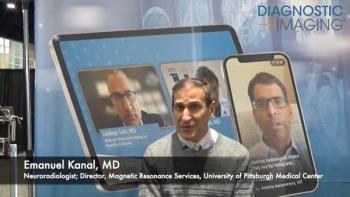
Referring Physicians Want Multimedia in Radiology Reports
Radiology reports delivered with image- and data-embedded multimedia are preferred by referring physicians over text-only reports.
Most physicians who refer patients for imaging prefer to receive image- and data-embedded multimedia-enhanced radiology reports (MERR) over traditional text-only radiology reports, according to a study published in the
Researchers from GA, MA, NY, VA, and Switzerland evaluated physicians’ perceptions of MERR as an alternative to text-only radiology reporting. Their 22-question web-based survey asked referring physicians their opinions of the format of currently received reports and the perceived value of MERR as an alternative reporting mechanism. Originally, 402 physicians responded to the survey; 200 (50 each medical oncologists, radiation oncologists, neurosurgeons, and pulmonologists) fulfilled the criteria. The mean age of the respondents was 46 and mean post-training clinical practice was 15 years; 85% of respondents were male.
The results showed that the majority of respondents, 80%, were satisfied with the format they were currently using. However, 80% also believed that MERR would have advantages over their current system. ”The most commonly reported advantages of MERR were “improved understanding of radiology findings by correlating images to text reports” (86%) and “easier access to images while monitoring progression of a disease/condition” (79%),” the authors wrote.
However, 28% of physicians did have concerns about MERR implementation: “The most common were that it was “too time intensive” (53%) and “the clinic workflow does not allow itself to view reports in such a fashion” (42%).” Overall, the respondents did indicate that they would be more likely to preferentially refer patients (80%) to facilities that offer MERR, and they would recommend (79%) this to their peers.
The researchers concluded that referring physicians saw MERR as an improvement over traditional text-based radiology reporting.
Newsletter
Stay at the forefront of radiology with the Diagnostic Imaging newsletter, delivering the latest news, clinical insights, and imaging advancements for today’s radiologists.




























